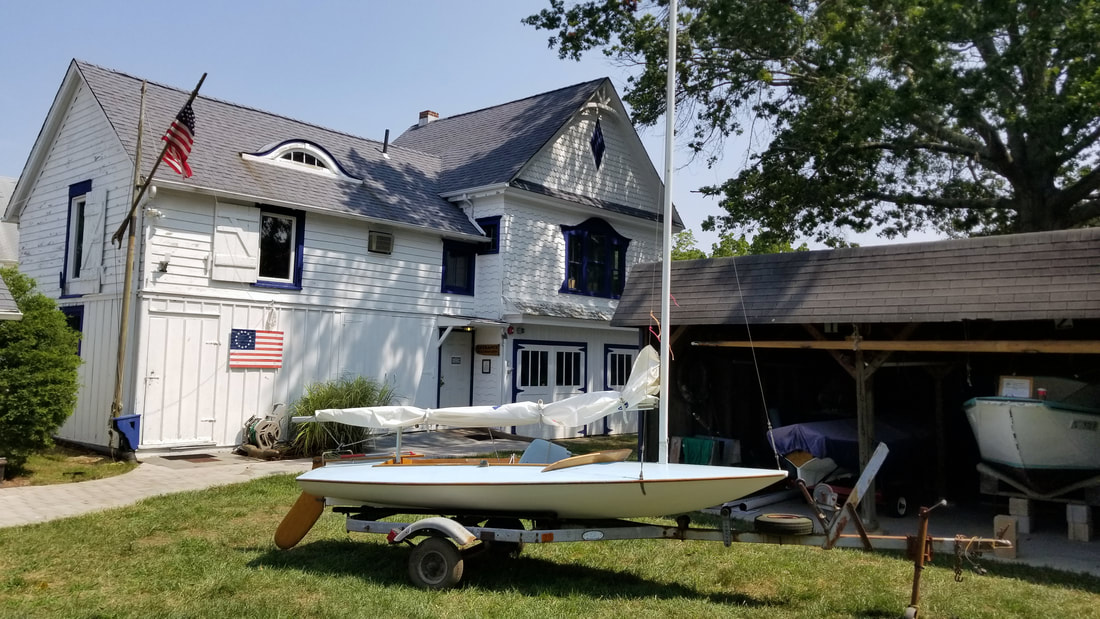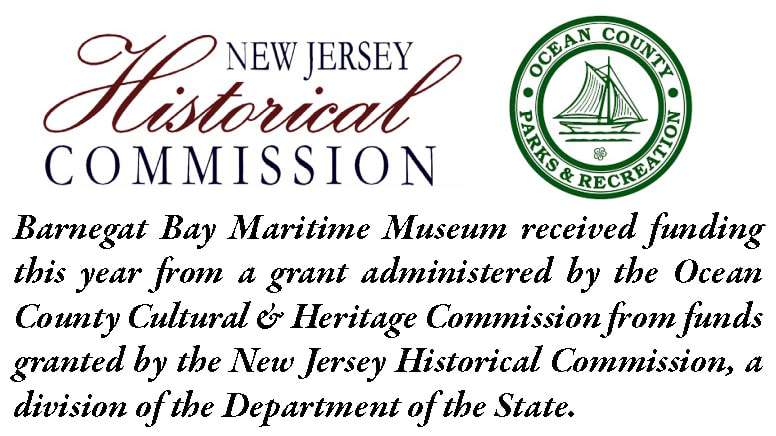|
Welcome to another Wooden Boat Wednesday!
This week we give the pirates and shore wreckers a break and turn our attention now to the majestic ocean-going sailing yachts of the late 19th and early 20th century. Appearing in the pages of the New York Tribune on September 23rd, 1902, the thrilling race for the Ocean Cup was on from the western shore of Coney Island down the entire coastline of the Jersey Shore to the Cape May lightship and back again. Enjoy! RACING IROQUOIS WINS.
SHE MAKES HER WAY WITH THE OCEAN YACHT CUP ON HER TIME ALLOWANCE.
With the wind whistling through her rigging and the steep seas combing over her lee bow, the stanch little schooner yacht Iroquois, that weathered the blizzard of 1888, came tearing past the Highlands of Navesink at noon on Sunday, the winner of the handsome ocean yacht race cup offered by Commodore Robert E. Tod of the Atlantic Yacht Club [Brooklyn, est. 1866].
Close on her weather quarter the big schooner Coronet, famous as the winner of the $20,000 race [$646,390 in 2022 dollars] to Queenstown, was slowly but surely overhauling her, and at 12:40 she passed the Iroquois. Nip and tuck on the same starboard tack they had fought it out in the heavy seas for thirty-eight miles from Barnegat, the smaller yacht staggering under a reefed mainsail, while the other carried whole sail.
After sailing something over 230 miles each, these two yachts that started only 2 minutes 37 seconds apart finished off Sea Gate [western end of Coney Island] with the Coronet leading by only 4 minutes 30 seconds—a truly remarkable contest. By reason of the time allowance given the Iroquois by the Coronet the former wins the race by quite a good margin.
Strange to say, the schooner Endymion, owned by George Launder, Jr., which won the two former ocean races arranged by the Atlantic Yacht Club, was the leader in the race all the way from Sea Gate to the outer mark—the Northeast End Lightship, off Cape May—when the wind was free and light and the water smooth, but when the windward work began in a strong breeze and a heavy sea the other two yachts outsailed her.
The Thistle, Commodore Tod's handsome topsail schooner, behaved splendidly in the heavy sea, and sailed fast with the wind free, but in the windward work she was much hampered by her yards on the foremast, causing her to fall off and to make leeway. While the others were able to sail within four points of the wind, six points was about as close as she would lie—a great handicap in such a contest. Commodore Tod's guests on board the Thistle were C.E. Schuyler, of the regatta committee; Major J. Fred Ackerman, George W. Rowan and Ernesto Simardetti.
On board the Endymion as guests of Mr. Lauder were Charles A. Forster, J.A. Ruland and Richard Sheldon. Horace Bullock, of Philadelphia, was the guest of J.G.N. Whitaker, the owner of the Iroquois.
A better start one would not wish to see than the five schooners when they crossed the line at 9:45 on Saturday morning, with a splendid breeze from the eastward, and all plain sail set, for they were not permitted, according to the rules, to carry their club topsails and other light sails. Down the Swash Channel they went, the big Endymion leading the way, with the Sachem crowding her close for a time, the Iroquois following close in her wake, and the Coronet, having passed the Thistle just before they reached the bell buoy at the entrance to the Swash, a few lengths ahead of that yacht as they passed the Romer Shoal Lighthouse.
While the others were passing out by Scotland Lightship at a ten knot clip, Commodore Tod cut off corners by sending his schooner Thistle through the channel inside the False Hook [east of Sandy Hook], and gained at least a mile by it.
Down the long thirty mile stretch of Jersey beach they went, the Sachem dropping out soon after passing Seabright and returning to the city. The others were surprised, for she was well ahead when she quit, and she really had a good show of winning the race if she had kept on. Sea Girl was abeam of the Thistle at 1 p.m. The Endymion was then two miles ahead; the Iroquois had just passed the Coronet, and had taken second place. These two passed Barnegat at about 3 o'clock, and as the wind grew lighter the Thistle, with her foresail, topsail and topgallant sail set, began to overhaul the Coronet, which was then on her starboard bow.
Little Egg Harbor was passed by the Thistle at 5:20, and at 7 p.m. Absecon and Atlantic City were passed at a distance of about four miles.
Two hours later the red and white twin lights of the Northeast End Lightship began to twinkle right ahead. The yachts rounded that mark in the following order and times: Yacht – Finish H.M.S. – Elapsed Time H.M.S. Endymion – 9:16:00 – ---------- Iroquois – 9:24:00 – 11:37:30 Coronet – 9:55:00 – 12:05:53 Thistle – 10:07:00 – 12:20:10 This shows that after sailing 110 miles the Endymion had only beaten the Iroquois 8 minutes 25 seconds. The latter had outsailed the Coronet 29 minutes 23 seconds, and the Coronet had outsailed the Thistle 14 minutes 17 seconds. Close hauled on the starboard tack they all began the return trip in the moonlight, but the weather was hazy, and overhead the scud was flying, presaging wind. It came with a vengeance at 1 o'clock, piping out of the east-northeast, and driving a big sea before it that soon made things lively for all hands on board the racing craft. The Coronet and the Iroquois both made a short tack inshore until they made the bell buoy off Atlantic City, then they stood offshore for five miles, and when they came in again they made Barnegat Light at 4:30 o'clock on Sunday morning.
Standing offshore again for several miles into the now heavy seas, they were able, from the good offing, to lay their courses without another tack for the Scotland Lightship. It was quite thick weather all the forenoon, but they made out the Endymion far to leeward of them for a short time. She, like the Thistle, had made several short tacks inshore, hoping to shorten the distance, but the breeze was too strong and the sea too heavy to admit of much tacking with profit, so they both lost ground by the operation. The Iroquois had to lower her foresail to repair a head earring, and she reefed her mainsail soon after. The Coronet carried whole sail all through the bad weather to the finish, but the Thistle was compelled to put one reef in her mainsail when it blew the hardest. Whole sail was made again, however, after passing Barnegat, and she made good time during the last hours of the race, coming up the Bay and through the Swash Channel carrying four lower sails and a flying jib. The night was clear, but very dark, and the wind blowing fully thirty miles an hour.
The official summary, as furnished by George Hill, of the regatta committee of the Atlantic Yacht Club, is as follows: Yacht and Owner – Finish H.M.S. – Elapsed Time H.M.S. Iroquois, J.S.N. Whitaker – 1:40:00 – 27:54:00 Coronet, Louis Bossert – 1:35:30 – 27:39:30 Endymion, George Lauder, Jr. – 3:04:00 – 29:56:09 Thistle, Robert E. Tod – 9:30:00 – 35:35:00 Thus the Iroquois wins by 14 minutes 30 seconds actual time. The corrected time will be given out on Wednesday, when the time allowance has been calculated. Boats of Barnegat Bay T-Shirts Make Great Gifts!All Sizes Available - Order Today! (CLICK HERE)Enjoyed this article? Please consider making a one-time or recurring donation today!
Your donations support preserving and restoring our shared maritime heritage on the waters of Toms River and Barnegat Bay, through our boat workshop, educational programs and special events. Thank you.
PLEASE NOTE: THE MARITIME MUSEUM IS CLOSED UNTIL TUES. JAN. 18th
(After Jan. 18th) Open Tuesdays, Thursdays, Saturdays - 10 am to 2 pm
78 East Water Street, Toms River, NJ 08753 Guided Tours By Request - New Members Always Welcome (732) 349-9209 - [email protected] Comments are closed.
|
NEWSArchives
May 2024
Categories |
OPEN TUES/THURS/SAT 10 to 2
Barnegat Bay Maritime MuseumVertical Divider
|
Upcoming EventsVertical Divider
|
|
© Barnegat Bay Maritime Museum. All rights reserved.












 RSS Feed
RSS Feed
